Grwpiau
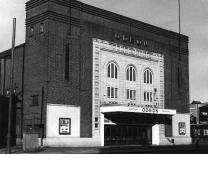
Burnt Oak, on the Northern line. (Successor to the currently inactive "Burnt Oak and Environs").
About the group Burnt Oak, Edgware, Queensbury and Colindale, the UndergrounD Suburbs!
Wedi ei greu 29 May 2013

colsouth111 |
||
|
Prior to the construction of the tube station and Watling Ave.
|

colsouth111 |
|
|
Welcome to the group David(*class31) A somewhat belated welcome on my part I'm afraid but it's lovely to have your impressive range of knowledge at hand.
|

colsouth111 |
|
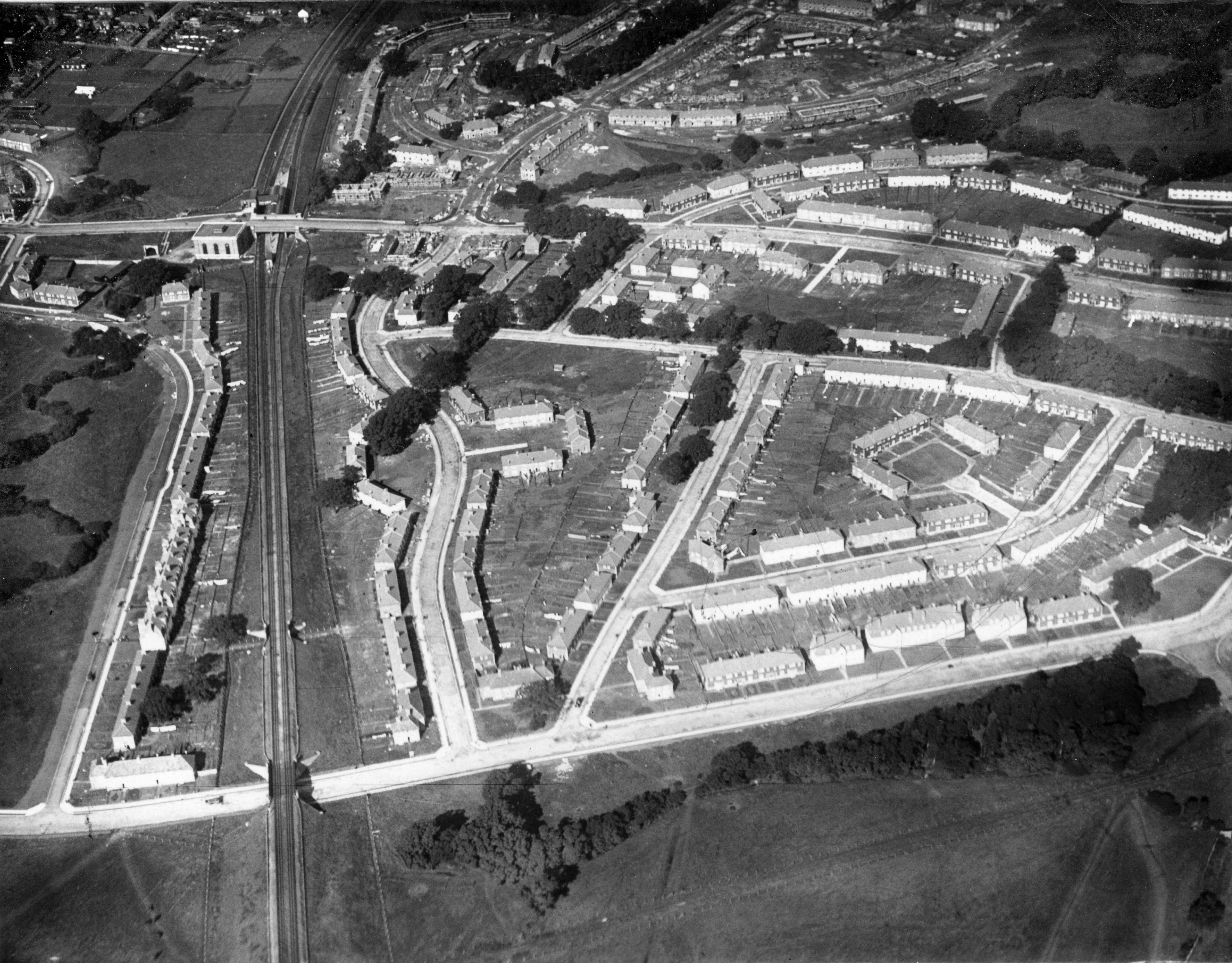
|

colsouth111 |
|
|
Another excellent early view of Burnt Oak with Watling Ave not yet laid and building of shops on High Road not yet commenced.
|

colsouth111 |
|
|
A cracking shot of the famous factory opened in 1895. It finally closed in 1980. Just one of a number of recently released early images and one that ties in nicely with the Hyde/West Hendon picture previously added by Katy.
|

colsouth111 |
|
|
An excellent source of earlier info on these areas is the map site http://maps.nls.uk/geo/explore which gives you an 1880/1913 map laid over a modern aerial view. It covers England and Wales and you can zoom in to the area you want.
|

colsouth111 |
|
|
Good to see another early shot of Burnt Oak, albeit rather distant as the aircraft are the stars of this picture. Close perusal of the distance allows us to see Burnt Oak before construction of the hospital and the Northern Line to Edgware.
Just look at all those surrounding fields! I wonder if there are any other such early Burnt Oak images yet to be released. |

colsouth111 |
|
|
This image, primarily to show Duples, also shows the GPO sorting office, Romacs where my mother-in-law worked, and the Hendon Court House too.
|

colsouth111 |
|
|
In the distance can be seen the rapid emergence of the Canada Park estate.
|

colsouth111 |
|
|
WELCOME TO THE GROUP FRENCH47. HOPE YOU FIND MUCH TO INTEREST YOU.
|

colsouth111 |
|
|
Queensbury as I remember it from my teenage years. Many happy memories here. Perhaps other group members can fill in some of the roads and their favourite places.
|

colsouth111 |
|
|
I'm being self indulgent in adding this just so I can reminisce about some of the shops I remember along the Broadway. The locations are only approximate so I may stand to corrected on some of them.
|

colsouth111 |
|

I am sad to see so much of Colindale's industrial past disappear. I hear that the last bit of Airco is under threat- it woudl be nice if it coudl be preserved. ( see picture) |

Mark Amies |
|
|
Welcome to the group Mark. Yes it is sad that Colindale's industrial heritage has largely been lost. If anybody could save that Airco remnant surely it would be English Heritage. What do you think Katy?
|

colsouth111 |
|
|
Thanks for adding those pins, Colsouth. Hard to imagine Stag Lane so rural as it it appears in that image. Great stuff.
|

bazouteast |
|
|
I've added this Mill Hill picture as these upmarket suburban semis, built at the the same time (1930) as John Laing's "little palaces of Colindale", were marketed by the builder Merilees as "bijou baronial halls". That description may seem contradictory but having visited one of them I can vouch that the spacious entrance hall cum lounge had oak paneled walls and a rather splendid staircase.
|

colsouth111 |
|
|
As a child in Burnt Oak, Mill Hill was rather off the radar but the eastern edge of the Watling estate reaches almost to Mill Hill, separated from it by the mainline railway and now also by the M1. Some years back an elderly lady told me how as a child she would occasionally walk with her mother across the fields to Burnt Oak. It was with some bitterness that she recalled the building of the Watling estate as a barrier to such childhood pleasures. She said that Mill Hill folk would refer, rather unfairly, to the LCC Watling estate as "little Moscow", which fact is also mentioned in Alan A Jackson's excellent book "Semi-detatched London" (2nd edition, Wild Swan, 1991).
|

colsouth111 |
|

|

colsouth111 |
|
|
Colsouth - the GM Works 1927 picture is amazing! I wondered if you or anyone can add more location pins so I can get my bearings on that one.
|

bazouteast |
|
|
Will do. The road running from lower left to upper right is the Edgware Road (A5), heading towards Burnt Oak. Carlisle Road runs across the top edge.
|

colsouth111 |
|
|
Picking up on the coincidence of bazouteast and northlondon boy's parents having worked in the same places,I include this image as my dad worked at Frigidaire, who occupied this building from about 1930. The factory was built during the first world war for the Aircraft Manufacturing Company. They went bust and vacated the factory in 1922 and it was taken over by General Motors for the assembly of Chevrolet Trucks. Truck assembly was moved to Luton in 1930, where Vauxhall Motors was and the truck company was renamed Bedford. The assembly of Frigidaire refridgerators was moved from a small location in Colindale into the factory. During the second world war they made fuel tanks for Halifax bombers. My mum worked for the Phoenix Telephone Co next door to Frigidaire before the war.
|

colsouth111 |
|
|
I was fascinated by NthLondonBoy's post of 3 Nov. My father was also a Postie at The Hyde sorting office and guess what - my Mum also worked at the GPO office near the old bus depot and later worked in Merit House (now Hyde House - corner of Edgware Road and Rookery Way) then finally to the GPO building almost directly opposite the sorting office.
|

bazouteast |
|
|
Now we can see Burnt Oak as I remember it, dominated by the rather grand London Co-op built in 1936, at the top of Stag Lane. I remember also the Fifty Shilling Tailor, already a rather optimistic name by 1948, Hemmings the bakers, the Express Dairy at the corner of the Watling, John Ford, a traditional Sainsbury's, ABC bakers and tea room, and of course Sidney Hurry, what a name for an undertaker! One year the 50 bob tailor (by then called John Collier) rather foolishly put it's sale posters on the outside of it's windows. Needless to say they soon found their way on to the undertakers window!
|

colsouth111 |
|
|
Hi colsouth111,
It's really interesting to read your comments on the photos for this area. Growing up near enough to be familiar with the Stanmore-Kingsbury run (Jubilee line was the nearest access point for the tube network), I've found it very instructive to catalogue the air photos around the Edgware Road! Yours, Katy Britain from Above Cataloguing Team Leader |
Katy Whitaker |
|
|
Now we expand our remit to Kingsbury and my preferred swimming pool in the area. Burnt Oak is joined at the hip with Kingsbury, the old district boundary bisecting the Canada Park estate across Vancover Road and the Chase. As a teenager I made good friends with many Kingsbury lads as some of my Burnt Oak friends were at school in Kingsbury.
|

colsouth111 |
|
|
Showing Church Lane on the cusp of its transformation into Station Road.
|

colsouth111 |
|
|
Thank goodness someone has taken the initiative to breath life back into this Burnt Oak group.
Well done colsouth111! |

bazouteast |
|
|
WELCOME BAZOUTEAST AND NRTHLONDON BOY TOO. GOOD TO HAVE SOME MORE COMPANY ON THE GROUP.
|

colsouth111 |
|
|
I remember Burnt Oak well having been born in Redhill / Edgware General in 1948 and brought up around Mill Hill, Colindale, Edgware and West Hendon in the 1950's & 60's.
Blackies for fruit & veg, an uncle worked at Tesco's and Duples, Hepworths where I used to have my suits made. My Dad was a postman based out of the Hyde sorting office, my mum worked for the GPO next to the old trolley bus depot. Many fond memories of growing up around that then safe area of London. |

NthLondonBoy |
|
|
Hi colsouth111,
I don't suppose you know, or could work out, which building at The Hyde was taken on as offices by the Aircraft Operating Company Ltd and Aerofilms Ltd, in the mid-1920s? They called it "Aerial House". I've no idea if it was a house converted for office use, or an office or light-industrial building. Would really aprpeciate any help you can give on this puzzle! Yours, Katy Britain from Above Cataloguing Team Leader |
Katy Whitaker |
|
|
Hello Katy
I considered this problem when I first saw you raise the question but couldn't find anything out about it. I will try again and also see if Mick willis, a former Aerofilms man knows anything when he returns from holiday. |

colsouth111 |
|
|
I love the expanse of fields in this image as we look south towards Cricklewood.
At the bottom left we can just see part of the Schweppes mineral water factory. The Hyde lies just a little to the north, also embracing the Edgware Road. Can't recall seeing many pictures yet actually of the Hyde rather than Colindale, apart from one of the Duple coach factory. |

colsouth111 |
|
|
Further to the Duple coach factory; the factory was built in 1926 when Duple moved from Hornsey. The factory was extended in 1934 when they bought Cowleaze House, which place I thought might have been a candidate for Aerial House.
|

colsouth111 |
|
|
An excellent view of Bacon Lane prior to its suburban development, that fits in nicely with the early pictures of Burnt Oak. A mystery surrounds the nature of the pile of wooden assemblies on the lower left. The future site of Lawsons Woodyard already seems to be timber storage yard.
|

colsouth111 |
|
|
Taken from the east we are looking up Hay Lane and in the lower part of the picture the line of trees at the back of Hyde Cottage marks the approximate line that Colin Park Road was built along a couple of years later. Also where the Davies Tyre works was eventually built is on the right hand edge of the image.
|

colsouth111 |
|
|
A friend has just reminded me that although Desoutter Bros became famous for power tools Marcel Desoutter started the company to manufacture artificial legs after losing a leg in a flying accident. His brother Charles set about designing him a modern, light weight prosthetic and so the company was born, with pneumatic drills as a money making sideline.
|

colsouth111 |
|
|
Work begins on the Watling estate.
|

colsouth111 |
|
|
A fine view across Burnt Oak showing the virtually complete Watling Estate. The image is well peppered with tags from knowledgeable contributors *class 31 and MB.
|

colsouth111 |
|
|
Burnt Oak station now properly built at street level, some six years after the station opened! No shops yet on the opposite side of the Watling, where I seem to remember Toni's Ice Cream Parlour.
|

colsouth111 |
|

|

colsouth111 |
|
|
The Canada Park estate spreads out with geometric precision.
|

colsouth111 |
|
|
Looking across from Holyrood Gns and the Dehaviland factory we can see a square of empty land that is the site of Stag Lane primary school. Indeed those huts may be any early manifestation of that establishment. The roads all around it are named after famous artists.
|

colsouth111 |
|

Honeypot lane runs down from the left and across to the lower right. The Met/ Bakerloo line would follow the same line a couple of years later and Queensbury station would be built towards the lower right just above Honeypot Lane. |

colsouth111 |
|
|
Welcome aboard Norman. See chat page.
|

colsouth111 |
|
|
The building of the Watling estate received a lot attention from AeroFilms. It was an important project right their doorstep so we now have the benefit of a mass of fine photographs to view the estate's development. The estate is almost a twin of the LCC estate at Beacontree in Essex. Watling Ave runs across the middle of the picture, the future site of Barnfield school just below it. The shops on the Watling have yet to be built. At the top left hand corner empty fields can be seen but in little more than two years these would be filled by the Canada Park estate.
|

colsouth111 |
|
|
Walking down Watling Avenue towards the station, my Dad's shop was on the left hand side. No sign yet of the Co-op on the main road.
|

Norman Vickery |
|

|

colsouth111 |
|
|
Many memories of attending the Gaumont for "Saturday Morning Pictures". Occasionally went to the Savoy - heading towards Colindale, but strangely more likely to go the Ritz, Edgware and on very rare occasions to the Essoldo, Queensbury.
|

Norman Vickery |
|
|
Taken from the opposite direction to the previous photo and four years later we can now Queensbury rapidly filling those empty fields. In the distance the station and leading to it from the left Beverley Drive, and on the right Mollison Way.
|

colsouth111 |
|
|
Can see Lawrence Crescent and Reynolds Drive between Mollison Way and Beverly Drive. Think my parents bought the house in Lawrence Crescent circa 1937. Notice no shops in Mollison Way.
|

Norman Vickery |
|
|
My profile gives immediate clues as to why I have joined this group.
|

Norman Vickery |
|
|
I love this view of the High St in 1926 as it allows us to see the corner of Church Lane/Station Road before the Forum parade of shops was built there.
|

colsouth111 |
|
|
And so to Edgware, which chronologically should have first but as a Burnt Oak boy Burnt Oak comes first. The tube station as we can see is being constructed in green fields beyond the boundaries of the village, yet already the urbanisation of Church Lane is under way with a parade of shops under construction in what was to become Station Rd.
|

colsouth111 |
|
|
And now to Queensbury in 1931, a district that did not actually exist until the tube station was built in 1933, despite many earlier images on this site being labelled Queensbury. The path of the tube line is marked on this photo, but Queensbury is largely the empty fields above that line reaching up to the rather geometric layout of the Canada Park estate on the upper right. The name Queensbury was the result of a local newspaper competition held to name the tube station, the station have been something of an afterthought on the part of the Metropolitan as they hadn't realised the interest developers had in those empty fields.
|

colsouth111 |
|
|
Five years on from the previous image and we have the Davies Tyre factory, Colin Park Road and its adjacent turnings all now in place.
Contributor Class31 has a good knowledge of this area and would be a valuable addition to this group, so wherever you are please get in touch. |

colsouth111 |
|
|
This picture shows factories on the Edgware Rd at Colindale. Many of them built around the time of the First World War and connected with aircraft manufacture. Compare the empty fields just beyond Colindeep Lane with same area five years later in the next picture.
|

colsouth111 |
|

|

colsouth111 |
|
|
One of several excellent views of Barnfield Rd, the clarity of which belies its age, just a year after the general strike and two years before the Wall St crash. Beyond we can see the Watling estate taking shape but nothing built on Watling Ave as yet. (Lovers of the'60s London blues scene might like to know that Long John Baldry's grandparents lived in Barnfield Road}. The prominent building on the left is the old Hendon Union Workhouse.
|

colsouth111 |
|
|
This view also offers an excellent snapshot of the west side of Burnt Oak Broadway (then known as High Road Burnt Oak) immediately prior to its development as a suburban shopping parade. As can be seen up to this point most building had been on the east side. Just out of view at the top of the picture the first stage of the high road development has begun and within five years shops and new houses will have surrounded those terraced cottages and will be rapidly filling the fields beyond.
Hidden within the copse of trees is Burnt Oak Farm. The entrance to the farm on the high road, marked by quite a large tree, was the eventual location of the Regent, Odeon, Gaumont Cinema of fond memory, now an Iceland store. |

colsouth111 |
|
|
Before North, South and East Roads were laid out from about 1867 onwards, Burnt Oak did not exist as a district; the area was known as Redhill and that name was originally given to Edgware General Hospital. On this picture Redhill Lodge can be seen standing in front of the new hospital buildings. Built I believe around 1860, Redhill Lodge was originally a school, later became an old men's home and was finally a shelter for homeless families. If any one can add to or indeed correct my information I would be interested to hear from you.
|

colsouth111 |
|

|

colsouth111 |
|
|
On the lower right is the terrace of houses where I grew up some 26 years after this picture was taken. Just behind our house can be seen the roof of a small engineering factory, newly built I suspect. This factory was later used by Boosey and Hawkes to assemble Hammond organs. The organist Harold Smart would occasionally visit and we would get an impromptu concert echoing across the roof tops. My first school, Burnt Oak Infants and juniors, is over to the left in North Road.
|

colsouth111 |
|
|
Like a number of tube stations, Burnt Oak (Watling) was set down in empty fields. It wasn't until 1926 when construction of the LCC Watling estate commenced that development of the district took off. This 1923 image shows the power or transformer house almost complete. The station remained little more than a shed at street level until the present station building was completed in 1929/30.
|

colsouth111 |
|
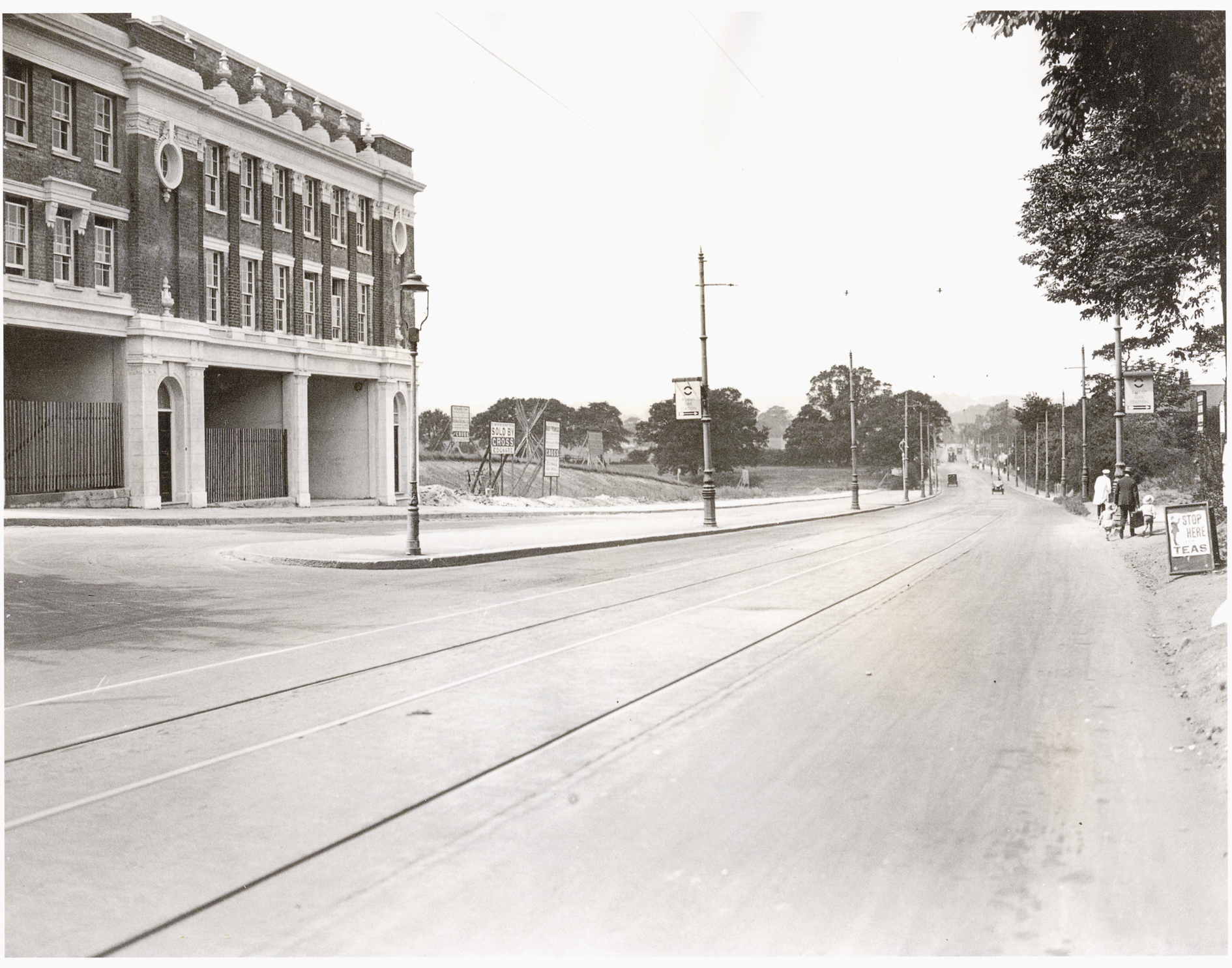
|

colsouth111 |

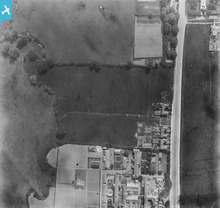
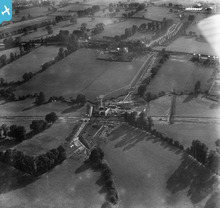


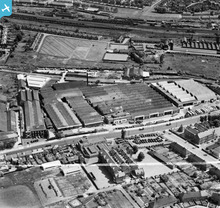
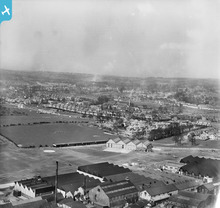





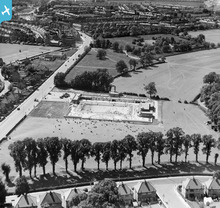
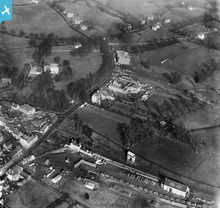

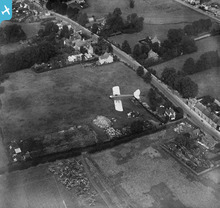




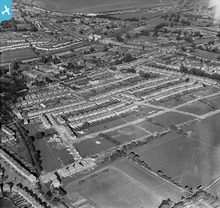
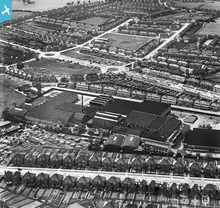


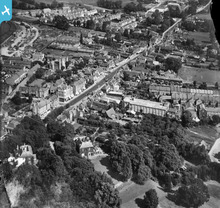


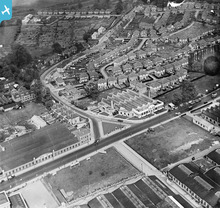
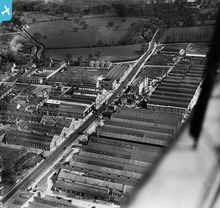

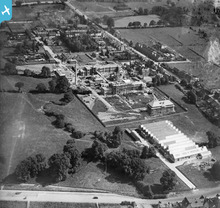
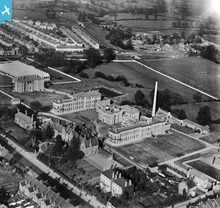


see image record